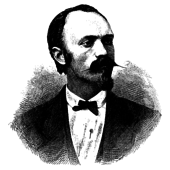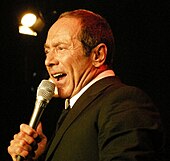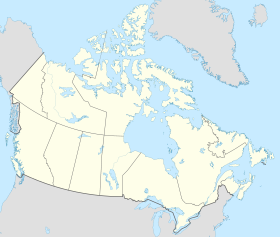Music of Canada
 | ||||||||
| Music of Canada | ||||||||
| Genres | ||||||||
|---|---|---|---|---|---|---|---|---|
| Specific forms | ||||||||
|
||||||||
| Media and performance | ||||||||
|
||||||||
| Nationalistic and patriotic songs | ||||||||
|
||||||||
| Regional music | ||||||||
The music of Canada reflects the diverse influences that have
Canadian music reflects a
History
Indigenous music
For thousands of years, Canada has been inhabited by
For many years after European settlement,
17th century

The earliest written record of
In what was then known as New France, the first formal ball was given by
18th century

Historically, music was composed in
After the 1760s, regular concerts became a part of the cultural landscape, as well as a wide variety of dancing. Operatic excerpts began to appear, and before the end of the century Canada had its first home-grown opera.
19th century
The beginning of the 19th century Canadian musical ensembles had started forming in great numbers, writing
The whole of the Canadian inhabitants are remarkably fond of dancing, and frequently amuse themselves at all seasons with that agreeable exercise.
— George Heriot, Travels Through the Canadas (1807)

Among the earliest musical societies were

The Great Migration of Canada from 1815 to 1850, consisting largely of Irish, and British immigrants, broadened considerably the Canadian musical culture.[46] 1844, Samuel Nordheimer (1824–1912) opened a music store in Toronto selling pianos and soon thereafter began to publish engraved sheet music.[1] Samuel Nordheimers store was among the first and the largest specialized music publisher in the Province of Canada.[47] They initially had the sole right to publish copies of Alexander Muir's "The Maple Leaf Forever" that for many years served as an unofficial Canadian national anthem.[48]
By the time of Canadian Confederation (1867), songwriting had become a favored means of personal expression across the land. In a society in which most middle-class families now owned a harmonium or piano, and standard education included at least the rudiments of music, the result was often an original song.[49] Such stirrings frequently occurred in response to noteworthy events, and few local or national excitements were allowed to pass without some musical comment.[50][51]
The 1870s saw several conservatories open their doors, providing their string, woodwind and brass faculty, leading to the opportunity for any class level of society to learn music.

"O Canada" was originally commissioned by the
Leo, the Royal Cadet a light opera with music by Oscar Ferdinand Telgmann and a libretto by George Frederick Cameron was composed in Kingston, Ontario, in 1889. The work centres on Nellie's love for Leo, a cadet at the Royal Military College of Canada who becomes a hero serving during the Anglo-Zulu War in 1879. The operetta focussed on typical character types, events and concerns of Telgmann and Cameron's time and place.[56]
20th century
1900–1929

Prior to the development of the

Canada's first independent record label Compo Company built a pressing plant (the largest of its day) in 1918 at Lachine, Quebec.[64] Compo was originally created to serve the several American independent record companies such as Okeh Records which wanted to distribute records in Canada.[65] The 1920s saw Canada's first radio stations, this allowed Canadian songwriters to contribute some of the most famous popular music of the early 20th century.[66] Canada's first commercial radio station CFCF (formerly XWA) begins broadcasting regularly scheduled programming in Montreal in 1920, followed by CKAC, Canada's first French language radio station, in 1922.[67] By 1923, there were 34 radio stations in Canada[68] and subsequently proliferated at a remarkable rate, and with them spread the popularity of jazz. Jazz became associated with all things modern, sophisticated, and also decadent.[69]
In 1925, the Canadian Performing Rights Society was formed to administer public performance and
The RCA Victor factory located in Montreal, Quebec housed Canada's first recording studio featuring polycylindrical walls which allowed the sounds to reflect in all directions.[73] Studio Victor had artists from across Canada come in and record in both English and French, as well as had many different genres be recorded within their walls such as jazz, chamber music, choirs, classical music, folk and country.[74] The factory is now home to many businesses one being the Musée des ondes Emile Berliner, a museum focused on the work of Berliner, mostly gramophones, flat disks, and later radios when his company merged with RCA, as well as the nature and science of sound waves.[75]
1930–1959
Emerging from the Great Depression on near equal-footing to

Following World War II a growth phase for Canadian bands was experienced, this time among school bands.[86] Rapid advances in the inclusion of instrumental music study in formal school curricula brought about fundamental changes to the philosophy of the band movement and the type of repertoire available.[86] The CHUM Chart debuted on May 27, 1957, under the name CHUM's Weekly Hit Parade, was in response to the fast-growing diversity of music that needed to be subdivided and categorized.[87] The CHUM charts were the longest-running Top 40 chart in Canada ending in 1986.[88]
1958 saw its first
1960–1999

With the introduction in the mid-1970s of mainstream music on FM radio stations, where it was common practice to program extended performances, musicians were no longer limited to songs of three minutes' duration as dictated by AM stations for decades.[96] Other notable musicians who have been one of the largest Canadian exports include the progressive rock band Rush, Triumph and Bryan Adams.[103][104] In the classical world, homegrown talent Canadian Brass was established in Toronto in 1970.

Country music remained popular in Canada in the 1970s thanks to the CBC's The Tommy Hunter show and the adult contemporary radio format which benefited the international stardom of Anne Murray. However, the more mainstream sound would hinder Stompin' Tom Connors until he would have a revival in the 1990s.
Canada's first nationwide music awards began as a reader poll conducted by Canadian music industry trade magazine RPM Weekly in December 1964.[105] A similar balloting process continued until 1970 when the RPM Gold Leaf Awards, as they were then known, were changed to the Juno Awards.[105] The Canadian Academy of Recording Arts and Sciences held the first Juno Award ceremony in 1975.[106] This was in response to rectifying the same concerns about promotion of Canadian artists that the Canadian Radio-television and Telecommunications Commission had.[105]

Canadian music changed course in the 1980s and 1990s, the changing fast-paced culture was accompanied by an explosion in
The influence and innovations of
Canadian women at the end of the 20th century enjoyed greater international commercial success than ever before.
21st century

The turn of the millennium was a time of incredible nationalism, at least as far as

In 2007, Canada joined the controversial Anti-Counterfeiting Trade Agreement talks,[128] whose outcome will[speculation?] have a significant impact on the Canadian music industry.[127][129] In 2010 Canada introduced new copyright legislation.[130] The amended law makes hacking digital locks illegal, but enshrine into law the ability of purchasers to record and copy music from a CD to portable devices.[130]
The early 2000s saw Canadian independent artists continue to expand their audience into the United States and beyond.
Anthems

Patriotic music in Canada dates back over 200 years as a distinct category from British patriotism, preceding the first legal steps to independence by over 50 years. The earliest, "The Bold Canadian", was written in 1812.[133]
- "O Canada" - the national anthem adopted in 1980.[55]
- "God Save the King" - Royal Anthem of Canada since 1980.[134]
- "The Maple Leaf Forever" - unofficial old national anthem 1867.[135]
- "Alberta" official anthem of Alberta.[136]
- "Ode to Newfoundland" - official anthem of Newfoundland and Labrador.[135]
- "The Island Hymn" - official anthem of Prince Edward Island.[137]
- "Gens du pays" - unofficial anthem of Quebec. Commonly associated with Quebec sovereignty.[138]
Accolades

The Canadian Music Hall of Fame established in 1976 honours Canadian musicians for their lifetime achievements.[139] The ceremony is held each year as part of Canada's main annual music industry awards, the Juno Awards.[140]
The
Canada also has many specific music awards, both for different genres and for geographic regions:
- CASBY Awards – Canada's annual independent and alternativemusic awards
- Canadian Country Music Awards – Canada's annual country musicindustry awards
- GMA Canada Covenant Awards – Canada's national awards for the Gospel music industry
- East Coast Music Awards– annual music appreciation for the East Coast of Canada
- Felix Awards – annual prize for members of the Quebecmusic industry
- Canadian Folk Music Awards - annual ceremony for achievements in folk and world music
- MuchMusic Video Awards – Canada's annual music videoawards
- Polaris Music Prize – award annually given to the best full-length Canadian album based on artistic merit
- Prism Prize - annual award for achievements in music video
- urban musicawards
- Aboriginal music
- Western Canadian Music Awards – annual music appreciation for the western part of Canada
Cultural and regional
Distinctive music scenes have been an integral part of the cultural landscape of Canada. With Canada being vast in size, the country throughout its history has had regional music scenes, with a wide and diverse accumulation of styles and genres from many different individual communities, such as Inuit music, music of the Maritimes and Canadian fiddle music.[143]
See also
- List of diamond-certified albums in Canada
- List of number-one singles (Canada)
- List of radio stations in Canada
- List of Canadian composers
- List of Canadian musicians
- List of bands from Canada
- Canadian classical music
- Canadian opera
- National Youth Orchestra of Canada
- The Top 100 Canadian Albums (2007)
References
- ^ a b c d "History of Canada in music". Historica Foundation of Canada. Archived from the original on 2017-09-27. Retrieved 2009-10-28.
- ^ eds Beveley Diamond & Robert Witmer (1994). Canadian Music-Issues of Hegemony & Identity. Canadian Scholars Press.
- )
- ^ ISBN 0-88912-020-X.)
{{cite book}}: CS1 maint: multiple names: authors list (link - ^ )
- OCLC 1268122769.
- ISBN 978-1-317-65952-5.
- ISBN 978-0-415-87560-8.
- ISBN 978-0-472-02241-0.
- ISBN 978-0-8020-9759-0.
- ISBN 978-1-135-94950-1.
- ISBN 978-0-19-976529-4.
- ^ Kallmann, Helmut; Potvin, Gilles (February 7, 2018). "O Canada". Encyclopedia of Music in Canada. Archived from the original on December 3, 2013. Retrieved November 27, 2013.
- ^ "Hymne national du Canada". Canadian Heritage. June 23, 2008. Archived from the original on January 29, 2009. Retrieved June 26, 2008.
- ISBN 978-0-313-05506-5. Archivedfrom the original on July 6, 2014. Retrieved September 21, 2016.
- ^ ISBN 0-02-975610-3.
- ^ "The Aboriginal Curatorial Collective". kingfisher (ACC/CCA). Archived from the original (PDF) on 2008-11-20. Retrieved 2009-10-28.
- ^ )
- )
- ^ Clint Goss (2011). "Membertou's Three Songs". Archived from the original on 1 May 2011. Retrieved 16 April 2011.
- ^ "The Ursulines in New-France". Musée des Ursulines de Québec. Archived from the original on 2000-08-23. Retrieved 2009-10-28.
- ^ ISBN 0-7876-4004-2)
- ^ a b "The Jesuit Relations(c.1635)". Cengage Learning, Inc. Archived from the original on 2009-09-17. Retrieved 2009-10-28.
- ISBN 0-7735-3012-6)
- ^ Vachon, André (1979) [1966]. "Chartier de Lotbinière, Louis-Théandre". In Brown, George Williams (ed.). Dictionary of Canadian Biography. Vol. I (1000–1700) (online ed.). University of Toronto Press. Retrieved 2009-10-28.
- ^ a b Vachon, André (1979) [1966]. "Jolliet, Louis". In Brown, George Williams (ed.). Dictionary of Canadian Biography. Vol. I (1000–1700) (online ed.). University of Toronto Press. Retrieved 2009-10-28.
- ^ ISBN 978-0-8153-1603-9. Retrieved 2009-10-28.
- ^ Contemporary Canadian Composers. ed. by Keith MacMillan and John Beckwith. Toronto, Ont. Oxford University Press, 1975.
- ISBN 0-919883-00-1)
- ISBN 0-19-540244-8)
- ^ Canadian Music and Education: an annotated bibliography of theses and dissertations / by Diane Peters. Lanham, Md. : Scarecrow Press, 1997. 476 p.
- ^ Canadian Musical Works S 1900–1980: a bibliography of general and analytical sources. Ottawa: Canadian Association of Music Libraries, 1983. p96
- ^ Research in music education : a Festschrift for Dr. Allen Clingman Brian A. Roberts, ed. St. John's Nfld. : Binder's Press, 1993. 214 p. A survey of research in Canada. (MT3 .C2O93 1993t)
- ^ "Canadian Songs for Parlour and Stage". Carleton University, Ottawa, Canada. Archived from the original on 2011-06-05. Retrieved 2009-10-28.
- )
- ISBN 978-0-662-46012-1.
- ^ Kallmann, Helmut. "The Canadian Encyclopedia". In Marsh, James Harley (ed.). Encyclopedia of Music in Canada > Musical Genres > National and royal anthems. Toronto: Historica Foundation of Canada. Archived from the original on 30 January 2016. Retrieved 25 June 2010.
- ^ Office of the Lieutenant Governor of Nova Scotia. "Royal Salute (Formerly known as the Vice-Regal Salute)". Queen's Printer for Nova Scotia. Archived from the original on 30 April 2010. Retrieved 25 June 2010.
- ^ Hoiberg, Dale (ed.). "Encyclopædia Britannica". O Canada. Toronto: Encyclopædia Britannica, Inc. Archived from the original on 17 January 2011. Retrieved 25 June 2010.
- ^ a b "Canadian Musical Composition before the First World War". Library and Archives Canada. Archived from the original on 2009-11-08. Retrieved 2009-10-28.
- ^ "The Canadian Boat Song Thomas Moore {128}". Poets' Corner Editorial Staff. Retrieved 2009-10-28.
- ^ a b "Band music composition". Encyclopedia of Music in Canada. Archived from the original on 2017-09-27. Retrieved 2009-10-28.
- ^ "Canadian Sheet Music Before 1867". Library and Archives Canada. Archived from the original on 2009-05-11. Retrieved 2009-10-28.
- ISBN 978-0-8387-5397-2. Retrieved 2009-10-28.
- ^ Calderisi, Maria (25 March 2019). "Canadian Sheet Music Before 1867". Library and Archives Canada. Retrieved 22 December 2021.
- ISBN 978-0-7656-0933-5.
- ^ "Maple Cottage, Leslieville, Toronto". Institute for Canadian Music. Archived from the original on 2009-03-31. Retrieved 2009-10-28.
- ^ The Piano Concerto In Canada, 1900–1980 a bibliographic survey. by Zuk, Ireneus. Baltimore, Md. Peabody Institute, 1985. 429 p. (Ref ML128 .P3Z85 1985t)
- ^ Making Music: Profiles from a Century of Canadian Music, Alex Barris and Ted Barris. Toronto: HarperCollins, 2001.
- ISSN 0008-4565
- ^ "Publishing and printing". The Canadian Encyclopedia. Archived from the original on 2017-09-27. Retrieved 2009-10-28.
- ^ "One Sweetly Solemn Thought Composer. Robert Steele Ambrose". Clifford Ford Publications. Archived from the original on 2009-01-20. Retrieved 2009-10-28.
- ^ "O Canada". The Canadian Encyclopedia. Archived from the original on 2015-11-07. Retrieved 2009-10-28.
- ^ a b Government of Canada (2008-06-23). "Hymne national du Canada". Canadian Heritage. Government of Canada. Archived from the original on 2009-01-29. Retrieved 2008-06-26.
- ISBN 9780665065514. Archivedfrom the original on 2012-10-20. Retrieved 2010-06-30.
- ISBN 0-7735-3177-7)
- ^ "Early Toronto Newspapers II". Edunetconnect.com. Archived from the original on 2000-03-04. Retrieved 2011-10-29.
- ISBN 978-0-393-03843-9.
- ISBN 0-393-97141-4)
- ^ "Chamber music performance". Encyclopedia of Music in Canada. Archived from the original on 2017-09-27. Retrieved 2009-10-28.
- ^ "Canadian Songwriting to 1920". Historica Foundation of Canada. Archived from the original on 2017-09-27. Retrieved 2009-10-28.
- ^ "History of Recorded Sound in Canada". Canadian Antique Phonograph Society. Archived from the original on 2012-07-21. Retrieved 2009-10-28.
- ^ "The Compo Company, History of Recorded Sound in Canada". Canadian Antique Phonograph Society. Archived from the original on 2009-09-18. Retrieved 2009-10-28.
- ^ "Compo Company Ltd". The Canadian Encyclopedia (Historica Foundation of Canada). Archived from the original on 2017-09-27. Retrieved 2009-10-28.
- ^ "Songwriters and Songwriting (English Canada)". Historica Foundation of Canada. Archived from the original on 2017-09-27. Retrieved 2009-10-28.
- ^ "Canadian Cultural Policies Chronology 1920s". Canadian Cultural Policies Chronology. Archived from the original on 2010-06-17. Retrieved 2009-10-28.
- ^ a b c d e "Highlights in the Evolution of Canadian Content Regulations". The Fraser Institute. Archived from the original on 2008-12-01. Retrieved 2009-07-24.
- ISBN 0-19-509514-6)
- ^ ISBN 0-670-87381-0)
- ^ "The Murray Adaskin Collection". University of Saskatchewan Archives. 2003. Archived from the original on 2012-03-01. Retrieved 2019-08-25.
- ^ Everett-Green, Robert. Composer expressed joy in art's beauty, The Globe and Mail, Wednesday, May 8, 2002. R7. Retrieved October 18, 2006.
- ^ "RCA Victor building". Héritage Montréal. Retrieved 2022-08-16.
- ^ "RCA Victor Studio (1929- c. 1980)". Musée des ondes Emile Berliner. Retrieved 2022-08-16.
- ^ "About The Museum". Musée des ondes Emile Berliner. Retrieved 2022-08-25.
- ISBN 0-312-10540-1.
- ^ Music in Canada: Capturing Landscape & Diversity, by Elaine Keillor, 2006 (McGill-Queen's University Press)
- ^ "Guy Lombardo 100 to 300 million phonograph records sold". Biography (All Music Guide). Retrieved 2009-10-28.
- ISBN 0-9695149-0-5)
- ^ Scott Yanow. "Oscar Peterson Biography". allmusic. Retrieved 2009-10-28.
- ISBN 0-19-517608-1
- ^ ISBN 0-252-02089-8)
- ^ SOCAN yearbook. Don Mills, Ont. : Society of Composers, Authors and Music publishers of Canada, 1994- (ML27 .C3S635)
- ^ a b "Portia White 1911–1968". The Centre for Canadian Studies. Archived from the original on 2009-03-18. Retrieved 2009-10-28.
- ISBN 978-1-55002-514-9.
- ^ a b "Expansion Since WWII, 1940–84". Historica Foundation of Canada. Archived from the original on 2011-06-07. Retrieved 2009-10-28.
- ^ Music Directory of Canada. 8th ed. Toronto : Norris-Whitney, 2001
- ^ Quill, Greg (2007-05-26). "Happy 50th birthday old CHUM". Toronto Star May 26, 2007. Archived from the original on February 20, 2011. Retrieved 2009-10-28.
- ISSN 0708-9635
- ISBN 0-8230-8285-7.
- ^ "RPM (magazine)collection at Library and Archives Canada". RPM Awards. Archived from the original on 2011-08-10. Retrieved 2009-10-28. Requires running a searches for Artist or year
- ^ Hawkins, Ronnie (2008). "Ronnie Hawkins Biography". Official Ronnie Hawkins Website. Hawkstone Enterprises Inc. Archived from the original on 2009-04-21. Retrieved 2009-06-02.
- ^ "Canada's Walk of Fame inductees". canadaswalkoffame.com. Archived from the original on 2008-07-13. Retrieved 2006-11-26.Requires running a searches for Artist or year
- ^ "Ronnie Hawkins 1958–2005" (Press release). The Hamilton Spectator- Souvenir Edition. June 10, 2006. p. MP43.
- ^ "Rockabilly Hall of Fame inductees". rockabillyhall.com. Archived from the original on 2011-05-14. Retrieved 2006-11-26.
- ^ ISBN 0-7737-6263-9.
- )
- ISBN 1-84195-084-X.
- ^ James Hale. "Leonard Cohen". The Canadian Encyclopedia. Archived from the original on 2014-02-16. Retrieved 2011-11-08.
- ^ "RPM 1964–2000 The Conscience of Canada's Music Industry". Library and Archives Canada -RPM history. Archived from the original on 2012-10-13. Retrieved 2009-10-28.
- ^ San Francisco Chronicle, 18 January 1967 column, p. 27
- ISBN 0-88830-052-2)
- ^ Armstrong, Denis (December 1, 2004). "Bryan Adams not slowing down". Ottawa Sun. Jam!. Archived from the original on July 22, 2012. Retrieved August 15, 2010.
{{cite news}}: CS1 maint: unfit URL (link) - ^ "RIAA gold and platinum certifications search". riaa.com. Archived from the original on 2013-06-22. Retrieved 2007-08-18.
- ^ a b c McLean, Steve. "Juno Awards". The Canadian Encyclopedia. Historica Foundation of Canada. Archived from the original on 5 April 2015. Retrieved 3 August 2009.
- ISBN 978-0-8020-9759-0. Retrieved 2011-01-16.
- ISBN 978-0-88794-112-2
- ISBN 0-415-09906-4. Page 240
- ISBN 978-1-55022-992-9.
- ^ "What is the first video that MuchMusic aired?". Muchmusic.com. 1984-08-31. Archived from the original on 2009-08-20. Retrieved 2011-10-29.
- ^ "MuchFACT". videofact.ca. 2010-02-27. Archived from the original on 2010-02-27. Retrieved 2019-08-25.
- ^ Women Musicians in Canada "on the record" the Music Division of the National Library of Canada / by C. Gillard. Ottawa : NLC, 1995. [6] leaves. (ML136 .O8G54 1995t)
- ^ ISBN 0-7715-7642-0)
- ^ "Dion Named All-time Best-selling Canadian Act". allbusiness.com. 2006-01-06. Archived from the original on 2010-09-26. Retrieved 2019-08-25.
- ^ Learn, Josh (2009-03-10). "High Fidelity: Top Selling Canadian Artists". The Brock Press. Archived from the original on 2019-08-25. Retrieved 2019-08-25.
- ^ "RIAA statistics". RIAA Certifications. Archived from the original on 2013-07-25. Retrieved 2009-10-28.
- ^ "World's Best Selling Female Artist of All Time". Sony Music Entertainment Canada. Archived from the original on 2009-12-08. Retrieved 2009-10-28.
- ^ "Celine Dion Awards". .aboutcelinedion.net. Archived from the original on 2010-03-23. Retrieved 2009-10-28.
- ^ "Dion, Lavigne score trophies at World Music Awards". CBC. 2007-11-05. Retrieved 2019-08-25.
- )
- ^ "A home-grown philosophy of Canadian content". by Charles Gordon The Ottawa Citizen, May 7, 1998. Archived from the original on May 14, 2010. Retrieved 2009-10-28.
- )
- ^ "A Foundation To Assist Canadian Talent, was created in 1984". VIDEOFACT AND PROMOFACT. Archived from the original on 2010-02-27. Retrieved 2009-10-28.
- ^ "End of track. (the vinyl record is meeting its demise in music recording industry)". The Economist (US). May 11, 1991. Archived from the original on October 25, 2009. Retrieved 2009-10-28.
- )
- ^ "Napster's High and Low Notes". Businessweek. August 14, 2000. Archived from the original on October 1, 2009. Retrieved 2009-10-28.
- ^ a b "(CRIA)President's Message". Canadian Recording Industry Association. Archived from the original on 2009-06-03. Retrieved 2009-10-28.
- ^ "Anti-Counterfeiting Trade Agreement". Ministry of Economic Development (Wellington, New Zealand). Archived from the original on 2011-07-16. Retrieved 2009-10-28.
- ^ "Canadian Copyright Act - Overview". Media Awareness Network (Department of Justice). Archived from the original on 2010-02-17. Retrieved 2009-10-28.
- ^ a b "Canada announces new copyright law for digital age". 2010. Archived from the original on 2010-06-06. Retrieved 2010-06-24.
- ISBN 978-1-4426-6077-9.
- ^ Ben Kaplan (2011). "The Canadian Invasion: Musicians from the Great White North dominate U.S. charts". National Post. Archived from the original on 2011-12-10. Retrieved 2013-05-28.
- ISBN 978-0-19-976529-4. Archivedfrom the original on 4 September 2016. Retrieved 21 September 2016.
- ^ "Canadian Heritage - National Anthem: O Canada". Pch.gc.ca. 2009-12-11. Archived from the original on 2011-05-15. Retrieved 2011-10-29.
- ^ a b "Canadian Heritage - Patriotic Songs". Pch.gc.ca. 2010-03-03. Archived from the original on 2011-05-15. Retrieved 2011-10-29.
- ^ Anonymous. "Canada Alberta: Alberta Provincial Song". Sheet music. National Anthems of the World Organisation. Archived from the original on 14 December 2007. Retrieved 4 May 2012.
- ^ "Provincial Anthem". www.princeedwardisland.ca. 2015-05-26. Retrieved 2021-05-10.
- ^ "'Gens du pays' | The Canadian Encyclopedia". www.thecanadianencyclopedia.ca. Retrieved 2021-05-10.
- )
- )
- ISBN 978-1-55002-886-7.
- ^ "The Awards". Governor General's Performing Arts Awards Foundation. Archived from the original on 10 March 2009. Retrieved 23 April 2009.
- ISBN 1-55082-107-5)
Further reading
- Adria, Marco (1990). Music of Our times: Eight Canadian Singer-Songwriters. Toronto: James Lorimer & Company Ltd.
- Asselin, André (1968). Panorama de la musique canadienne. 2e éd., rev. et augm. Paris: Éditions de la diaspora française.
- Audley, Paul. "The Recording Industry" and "Radio", in his Canada's Cultural Industries: Broadcasting, Publishing, Records, and Film (Toronto: J. Lorimer & Co., in Association with the Canadian Institute for Economic Policy, 1983), p. 141–212. ISBN 0-88862-459-X(pbk.)
- Beckwith, John (1997). Music papers: articles and talks by a Canadian composer, 1961–1994. Golden Dog Press. ISBN 0-919614-72-8.
- Browner, Tara (2009). Music of the First Nations: Tradition and Innovation in Native North America. University of Illinois Press. ISBN 978-0-252-02221-0.
- Edwardson, Ryan (2009). Canuck rock: a history of Canadian popular music. University of Toronto Press. ISBN 978-0-8020-9989-1.
- McCready, Louise G. (1957). Famous Musicians: MacMillan, Johnson, Pelletier, Willan. Canadian Portraits. Vol. 2. Clarke, Irwin. OCLC 760065732.
- Martin Melhuish (1983). Heart of Gold: 30 Years of Canadian Pop Music. CBC Enterprises. ISBN 978-0-88794-112-2.
- Edward Balthasar Moogk (1975). Roll Back the Years: History of Canadian Recorded Sound and Its Legacy, Genesis to 1930. National Library of Canada. N.B.: In part, also, a bio-discography; the hardback ed. comes with a "phonodisc of historical Canadian recordings" (33 1/3 r.p.m., mono., 17 cm.) which the 1980 pbk. reprint lacks. ISBN 0-660-01382-7(pbk.)
- Edith Kathryn Moogk (1988). Title Index to Canadian Works Listed in Edward B. Moogk's "Roll Back the Years, History of Canadian Recorded Sound, Genesis to 1930", in series, C.A.M.L. Occasional Papers, no. 1. Canadian Association of Music Libraries. N.B.: Title and fore-matter also in French; supplements the index within E. B. Moogk's book. ISBN 0-9690583-3-0
- Morey, Carl (1997). Music in Canada: a research and information guide. Routledge. ISBN 0-8153-1603-8.
- Pegley, Kip (2009). Coming to you wherever you are: MuchMusic, MTV, and youth identities. Wesleyan Univ. Press. ISBN 978-0-8195-6869-4.
- Lucien Poirier, ed. (1983). Répertoire bibliographique de textes de presentation generale et d'analyse d'oeuvres musicales canadienne, 1900–1980 = Canadian Musical Works, 1900–1980: a Bibliography of General and Analytical Sources. Under the direction of Lucien Poirier; compiled by Chantal Bergeron [et al.]. Canadian Association of Music Libraries. ISBN 0-9690583-2-2
- Truffaut, Serge (1984). Le Jazz à Montréal, in series, Collection Montréal. Montréal, Qué.: Groupe Québec-Rock. N.B.: A chronology. Without ISBN
- OCLC 65206128.
- Canadian Music Catalogues and Acquisitions lists. Toronto, (1971) various lists of Canadian music (orchestral, vocal, chamber, choral).
- Nancy-Lou Patterson (1973). Canadian native art: arts and crafts of Canadian Indians and Eskimos. Collier-Macmillan Canada.
- Willy Amtmann (1975). Music in Canada, 1600–1800. Habitex Books. ISBN 0-88912-020-X.
- Keith Campbell MacMillan; John Beckwith (1975). Contemporary Canadian composers. Oxford University Press. ISBN 978-0-19-540244-5.
- Willy Amtmann (1976). La musique au Québec, 1600–1875. Les éditions de l'Homme. ISBN 0-7759-0517-8.
- Bergeron, Chantal; Poirier, Lucien, eds. (1983). Répertoire bibliographique de textes de présentation générale et d'analyse d'œuvres musicales canadiennes (1900-1980) [Canadian Musical Works 1900-1980: a Bibliography of General and Analytical Sources]. Publications (in English and French). Vol. 3. Ottawa: Canadian Association of Music Libraries. ISBN 9780969058328.
- Randy Ray; Mark Kearney (1991). Canadian Music Fast Facts: Profiles of Canada's Pop Music Pioneers. Sparky Jefferson Productions. ISBN 978-0-9695149-0-9.
- Kearney, Mark (1991). Canadian music fast facts : a resource booklet on Canadian pop music history. London, Ont: Sparky Jefferson Productions. OCLC 24284249.
- Jackson, Rick (1994). Encyclopedia of Canadian rock, pop & folk music. Kingston, Ont: Quarry Press. OCLC 30068350.
- Women Musicians in Canada "on the record the Music Division of the National Library of Canada by C. Gillard. Ottawa : NLC, (1995) (ISBN 0-7759-0517-8)
- Pryke, Kenneth (1998). Profiles of Canada. Toronto, On: Irwin Pub. OCLC 45730847.
External links
- Canadian Music Periodical (CMPI) - Library and Archives Canada
- RPM Magazine, 1964–2000 - Library and Archives Canada
- Meet American Top Musician
- https://moeb.ca

